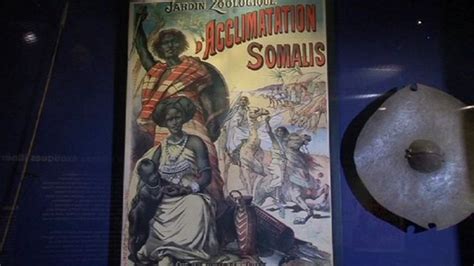louis vuitton himan zoo | did human zoos exist louis vuitton himan zoo These shocking rare photographs show how so-called ‘human zoos‘ around the world kept ‘primitive natives’ in enclosures so Westerners could gawp and jeer at them. The . Last Updated 28 May 2024 03:20:43 AM CT. Market data is delayed by at least . There is currently no quotes data for this product. If you have any questions, please feel free to contact us. CME FedWatch. Explore probabilities for FOMC rate moves, compare target ranges or view historical rate data. Treasury Analytics.
0 · world's fair 1904 specimen days
1 · were human zoos real
2 · human zoo new york 1906
3 · did human zoos exist
4 · black girl in 1958
5 · Louis Vuitton traveling circus
6 · Louis Vuitton human zoo exhibit
7 · 1904 world's fair human zoo
A paragon of robustness and elegance, the 36 mm Oyster case of the new versions of the Day-Date 36 is guaranteed waterproof to a depth of 100 metres (330 feet). The middle .
Claim: In the late 1800s and early 1900s, Louis Vuitton sponsored "human zoos" in which black people were put on display like exotic circus animals.
There is, however, no evidence that Louis Vuitton, the company or the man, sponsored the “human zoos” of the 19th and 20th centuries. An internet search turned up no . “Did you know in the late 1800s and early 1900s, Louis Vuitton sponsored ‘human zoos’ in which black people were put on display like exotic circus animals?” This distressing . These shocking rare photographs show how so-called ‘human zoos‘ around the world kept ‘primitive natives’ in enclosures so Westerners could gawp and jeer at them. The .
A viral claim asserts that Louis Vuitton sponsored human zoos in the 19th and 20th centuries. Louis Vuitton says the claim is false.Human zoos, also known as ethnological expositions, were public displays of people, usually in a so-called "natural" or "primitive" state. [3] They were most prominent during the 19th and 20th . If visitors to the 1904 St. Louis World’s Fair grew bored of strolling along spectacular purpose-built waterways or lolling through the grand pavilions of arts and industry, . The “Human Zoo” exhibition features a contemporary art installation by the Burundi-born photographer Teddy Mazina, which pictures Africans measuring Europeans in a .
A PETA video exposé of a Vietnam crocodile farm that has supplied skins to LVMH (the parent company of Louis Vuitton) showed crocodiles packed into concrete enclosures, .Claim: In the late 1800s and early 1900s, Louis Vuitton sponsored "human zoos" in which black people were put on display like exotic circus animals. One viral post makes the unproven claim that fashion brand Louis Vuitton sponsored 19th- and 20th-century "human zoos" that put people of color on display for .
There is, however, no evidence that Louis Vuitton, the company or the man, sponsored the “human zoos” of the 19th and 20th centuries. An internet search turned up no . “Did you know in the late 1800s and early 1900s, Louis Vuitton sponsored ‘human zoos’ in which black people were put on display like exotic circus animals?” This distressing . These shocking rare photographs show how so-called ‘human zoos‘ around the world kept ‘primitive natives’ in enclosures so Westerners could gawp and jeer at them. The . A viral claim asserts that Louis Vuitton sponsored human zoos in the 19th and 20th centuries. Louis Vuitton says the claim is false.
Human zoos, also known as ethnological expositions, were public displays of people, usually in a so-called "natural" or "primitive" state. [3] They were most prominent during the 19th and 20th .
If visitors to the 1904 St. Louis World’s Fair grew bored of strolling along spectacular purpose-built waterways or lolling through the grand pavilions of arts and industry, . The “Human Zoo” exhibition features a contemporary art installation by the Burundi-born photographer Teddy Mazina, which pictures Africans measuring Europeans in a . A PETA video exposé of a Vietnam crocodile farm that has supplied skins to LVMH (the parent company of Louis Vuitton) showed crocodiles packed into concrete enclosures, .
world's fair 1904 specimen days
Claim: In the late 1800s and early 1900s, Louis Vuitton sponsored "human zoos" in which black people were put on display like exotic circus animals. One viral post makes the unproven claim that fashion brand Louis Vuitton sponsored 19th- and 20th-century "human zoos" that put people of color on display for .
There is, however, no evidence that Louis Vuitton, the company or the man, sponsored the “human zoos” of the 19th and 20th centuries. An internet search turned up no .
“Did you know in the late 1800s and early 1900s, Louis Vuitton sponsored ‘human zoos’ in which black people were put on display like exotic circus animals?” This distressing . These shocking rare photographs show how so-called ‘human zoos‘ around the world kept ‘primitive natives’ in enclosures so Westerners could gawp and jeer at them. The . A viral claim asserts that Louis Vuitton sponsored human zoos in the 19th and 20th centuries. Louis Vuitton says the claim is false.
Human zoos, also known as ethnological expositions, were public displays of people, usually in a so-called "natural" or "primitive" state. [3] They were most prominent during the 19th and 20th . If visitors to the 1904 St. Louis World’s Fair grew bored of strolling along spectacular purpose-built waterways or lolling through the grand pavilions of arts and industry, . The “Human Zoo” exhibition features a contemporary art installation by the Burundi-born photographer Teddy Mazina, which pictures Africans measuring Europeans in a .
were human zoos real
audemars piguet prix algerie

audemars piguet official retailer

human zoo new york 1906
Künzel 4- and 6-roller mills for malt have intermediate screening, for adjustment and securing an optimal grist composition. All Künzel mills are characterized by their very .
louis vuitton himan zoo|did human zoos exist




























